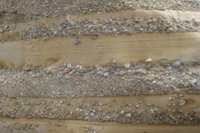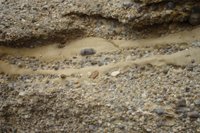 REF: WWW.REDORBIT.COM
REF: WWW.REDORBIT.COMSantorini, Greece
This ASTER image of Santorini was acquired on November 21, 2000 and covers an area of 18 by 18 km.
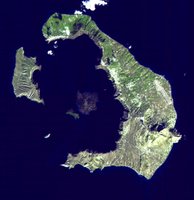
Krakatau, Indonesia
This detailed image of the young volcano was taken by the Ikonos satellite on June 11, 2005. The volcano’s circular crater sits southwest of the center of the island and is surrounded by fresh lava flows and ash. The black shores of the island are scalloped where the flows have solidified in the ocean.
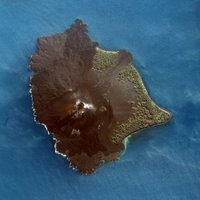
Unibas, Peru
This oblique image (looking at an angle) from the International Space Station (ISS) captures an ash cloud first observed on satellite imagery at 11:00 GMT on August 14, 2006. An ISS astronaut took this picture one hour and 45 minutes later.
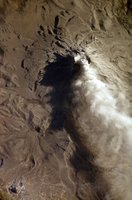
Gunung Bromo, Indonesia
This image shows most of the Sandsea Caldera, along with Gunung Bromo and the older volcanoes on the caldera floor. A small plume of steam is visible rising out of Mt. Bromo. Space Imaging’s IKONOS satellite, capable of 4-meter per-pixel color imagery, and 1-meter per-pixel
resolution panchromatic imagery, acquired the data on July 8, 2001.
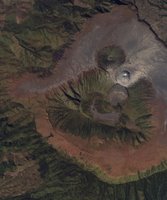
Mt. Etna , Italy
Astronaut photograph ISS013-E-62714 was acquired August 2, 2006, with a Kodak 760C digital camera using an 800 mm lens, and is provided by the ISS Crew Earth Observations experiment and the Image Science & Analysis Group, Johnson Space Center
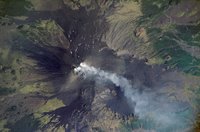
Pico de Teide and Pico Viejo , Tenerife:
Astronaut photograph ISS013-E-23272 was acquired June 8, 2006, with a Kodak 760C digital camera using an 800 mm lens, and is provided by the ISS Crew Earth Observations experiment and the Image Science & Analysis Group, Johnson Space Center.
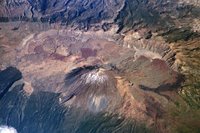
Vesuvius, Italy
Quickbird satellite on July 12, 2002




















